+Search query
-Structure paper
| Title | Structural basis for the distinct core-antenna assembly of cryptophyte photosystem II. |
|---|---|
| Journal, issue, pages | Nat Commun, Vol. 15, Issue 1, Page 6812, Year 2024 |
| Publish date | Aug 9, 2024 |
 Authors Authors | Long Si / Shumeng Zhang / Xiaodong Su / Mei Li /  |
| PubMed Abstract | Photosystem II (PSII) catalyzes the light-driven charge separation and water oxidation reactions of photosynthesis. Eukaryotic PSII core is usually associated with membrane-embedded light-harvesting ...Photosystem II (PSII) catalyzes the light-driven charge separation and water oxidation reactions of photosynthesis. Eukaryotic PSII core is usually associated with membrane-embedded light-harvesting antennae, which greatly increase the absorbance cross-section of the core. The peripheral antennae in different phototrophs vary considerably in protein composition and arrangement. Photosynthetic cryptophytes possess chlorophyll a/c binding proteins (CACs) that serve as their antennae. How these CACs assemble with the PSII core remains unclear. Here, we report the 2.57-Å resolution structure of cryptophyte PSII-CAC purified from cells at nitrogen-limited stationary growth phase. We show that each monomer of the PSII homodimer contains a core complex, six chlorophyll a/c binding proteins (CACs) and a previously unseen chlorophyll-binding protein (termed CAL-II). Six CACs are arranged as a double-layered arc-shaped non-parallel belt, and two such belts attach to the dimeric core from opposite sides. The CAL-II simultaneously interacts with a number of core subunits and five CACs. The distinct organization of CACs and the presence of CAL-II may play a critical role in stabilizing the dimeric PSII-CAC complex under stress conditions. Our study provides mechanistic insights into the assembly and function of the PSII-CAC complex as well as the possible adaptation of cryptophytes in response to environmental stresses. |
 External links External links |  Nat Commun / Nat Commun /  PubMed:39122741 / PubMed:39122741 /  PubMed Central PubMed Central |
| Methods | EM (single particle) |
| Resolution | 2.57 - 2.9 Å |
| Structure data | EMDB-38455, PDB-8xlp:  EMDB-38912: Overall map of PSII-CAC  EMDB-38913: Focus refinement map of PSII-CAC |
| Chemicals |  ChemComp-FE2: 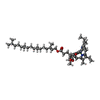 ChemComp-CLA:  ChemComp-PHO: 
ChemComp-WVN: 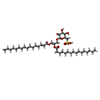 ChemComp-SQD: 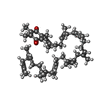 ChemComp-PL9: 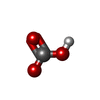 ChemComp-BCT: 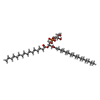 ChemComp-LHG:  ChemComp-CL:  ChemComp-MN: 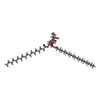 ChemComp-LMG: 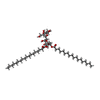 ChemComp-DGD:  ChemComp-HEM:  ChemComp-KC2:  ChemComp-II0: 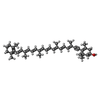 ChemComp-IHT:  ChemComp-HOH: |
| Source |
|
 Keywords Keywords | PHOTOSYNTHESIS / Photosystem II associated with CAC antenna from Rhodomonas Salina |
 Movie
Movie Controller
Controller Structure viewers
Structure viewers About Yorodumi Papers
About Yorodumi Papers




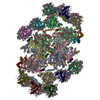
 rhodomonas salina (eukaryote)
rhodomonas salina (eukaryote)